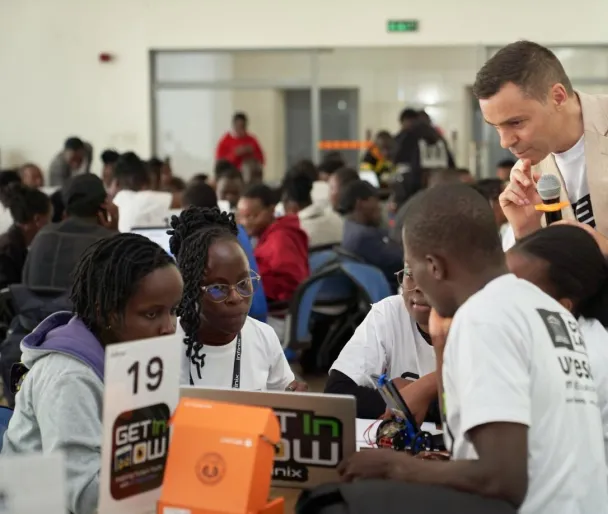How to measure impact

You can’t manage what you don’t measure. How can businesses practically measure how they are progressing to meaningful sustainability with technology, and its impact?
The world changed dramatically at the start of 2020, and with it came an acceleration in the demand for accountability and sustainability of corporations. Vocal populations - made more so thanks to social media - are calling out brands and businesses for their historical or current impact on the environment, marginalised communities, their employees, and their bottom line. Some businesses were already moving towards a higher standard of conduct, some have been there for a long time, some are just coming to grips with accountability.
One thing is apparent - there is no escaping the requirement for sustainability. It’s no longer the nice-to-have in the annual report, the goodwill gesture. It’s a driving force, and it covers everything from environmental and social impact, to corporate governance, to diversity, equity, and inclusion.
“If you can’t measure it, you can’t improve it,” is a quote attributed to management thinker Peter Drucker. How will anyone know whether their efforts are successful or not, unless we can define where we are now and then establish a metric for measuring progress.
In New Zealand, the government will introduce a law that requires the financial sector to disclose the impacts of climate change on their business and explain how they will manage climate-related risks and opportunities - this is one step towards what it looks like for a business to measure their activity.
But this is only one sector, and only one metric. Climate-related risks are not the sole indicators to watch for true sustainability to be achieved.
A huge amount of conversation around the table circled the question: Who decides the goals for sustainability and what are the metrics?
The last few decades have started to produce frameworks or tools such as the Triple Bottom Line Reporting and B Corp Certification. The problem is there is no single marker for improvement because “sustainable” balances so many different elements and requires a dashboard of reporting to be kept in check.
We can agree that a positive impact is beating the data baseline on a particular indicator: ensuring we have made things better, or at least not made them worse. Kate Raworth’s Donut Economics was raised for the second time in this Techweek event; how can humanity operate within both planetary boundaries and social boundaries?
This opened up the next question: How do we find the baseline? How do we know where the boundary is?
The 17 UN Sustainable Development Goals launched in 2015 are widely accepted as the global framework that will lead innovative efforts to build sustainable societies. This could be a good place to start.
COMPARE APPLES WITH APPLES
When 97% of NZ businesses are classified as SMEs, transport is responsible for the most emissions, and supermarkets can impact the lives of an entire population with their no-plastic bag mandate or supply choices, it’s clear that not every business has the same baseline or goals.
And not every business makes the same amount of impact with the same type of change. It’s a valiant effort for a small tech startup to achieve a B Corp certification, but in reality the big players - enterprises and corporations - need to implement these initiatives to make an impact at scale, affecting a whole city or country. Since the Techweek event, Kiwibank announced they were a Certified B Corporation which proves that this is an achievable endeavour.
One person at the roundtable had an idea for challenges between companies on sector-relevant goals… some friendly pressure. When one supermarket leads the way in sustainable initiatives, the rest tend to follow. Now that Kiwibank has achieved B Corp status, will other banks follow suit?
THE POWER OF PEOPLE
So much of the roundtable discussion was around ‘who’ was responsible for the goals, the metrics and the reporting. The rise of hiring people with the sole job of “sustainability” within an organisation has been steadily increasing for years, so hiring someone who has the experience and education to assess all markers related to their specific workplace can lead the charge towards meaningful sustainability.
Outside of an organisation, consumers have a long history of demanding and realising change from corporations. A fashion & textile industry report from 2020 states that more than 50% of executives believe consumers are driving the increased focus on sustainability. Just this month, Billie Eilish was able to convince fashion house Oscar de la Renta to commit to being fur free. By placing sustainability goals at the top of our list and making that demand evident with purchasing power, we can change things.
MEASURE WITH TECH
So where is the tech in all this sustainability change and reporting? Well again, it’s looking a little better for individuals.
With CoGo as an example which helps individuals measure their carbon offset, platform Good On You for sustainable and ethical fashion information and Best Fish Guide for sustainably sourced seafood - the list of consumer apps is long and constantly growing.
It might not be as easy for businesses yet to simply plug in the numbers to measure all their sustainability points, but some great tools such as the calculators on Toitū Carbon & Environmental Certifications are a step in the right direction, and this is a space that is sure to see growth over the coming years.
Sustainability measurements and indicators are constantly evolving, along with our evolving world. As our collective social, economical and environmental conditions change, it’s up to businesses to collect the data, make a choice on where improvements should be made, and align improvements with action.
We don’t do it because it’s easy, we do it because it’s right.
This article first appeared in ‘Connecting for a Better Future: a collection of essays’ in response to the RUSH x AUT Techweek Roundtable Discussions published in September 2021. Read the full whitepaper here.








